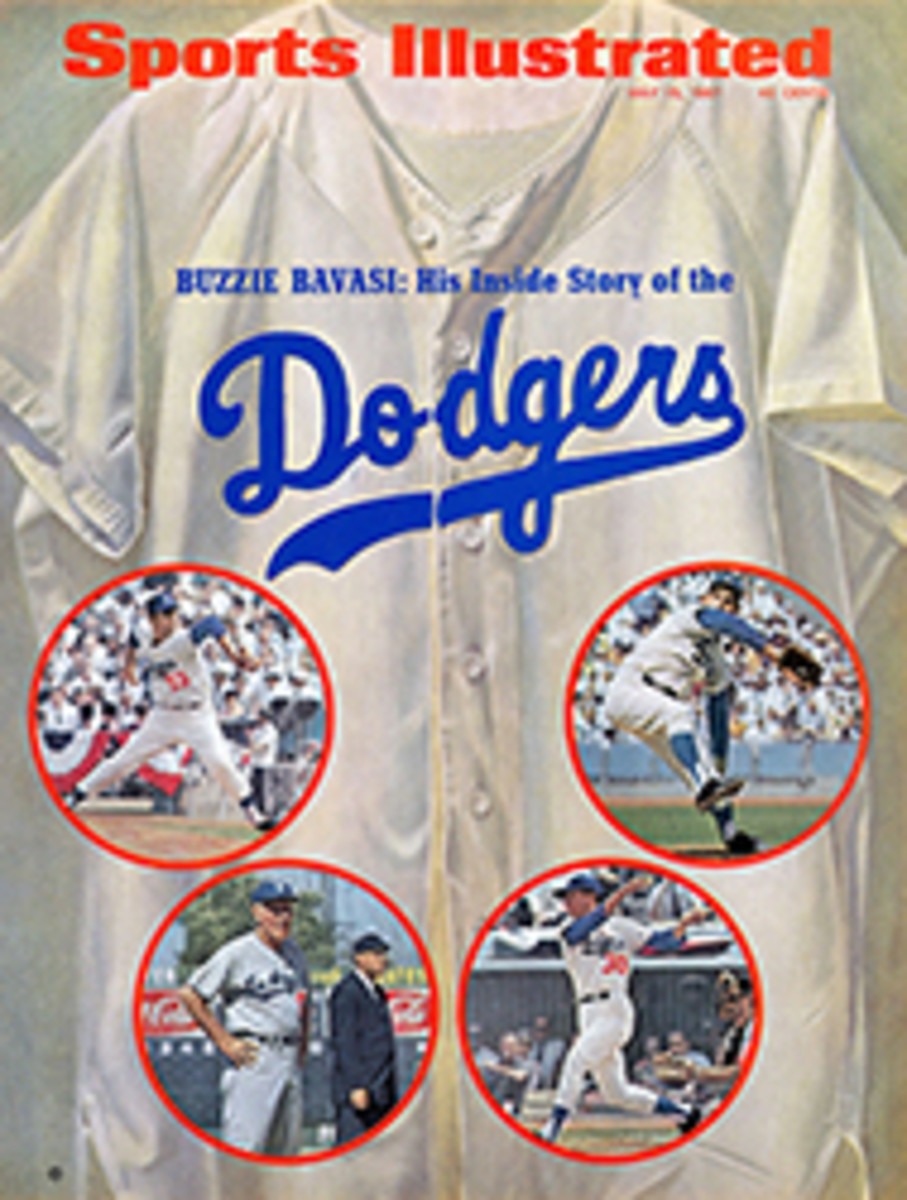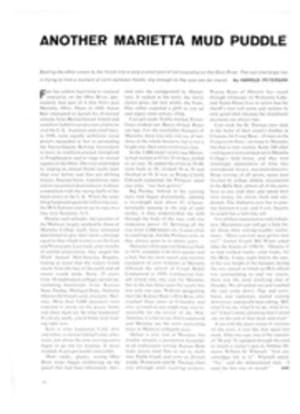
No Boneyard near the Soapberry Tree
The world of boxing and the world of dominoes have at least one thing in common: an occasional dispute about who is the world champion. The heavyweight division settled its problem when Muhammad Ali beat Ernie Terrell, but domino fans are still divided over whether the true champ is the winner of a swanky society affair held once a year in San Francisco where the entry fee is $100 a team or the winner of the annual World Championship Domino Tournament in Carnegie, Okla., which had been going on for 17 years before the Nob Hill crowd even thought of having their tournament. The dispute may never be properly settled, because nobody makes any money whatever out of being a domino champion and tragically few outsiders care whether they win the title or not. This may explain why contenders at the Carnegie tournament usually arrive looking somewhat sheepish, as if they were about to take part in an illicit cockfight. Upon entering the arena to watch the title matches in Oklahoma last time around, one half expected to find Jake Kilrain battling for the bareknuckle championship of the world.
The Carnegie tournament is always held on a Friday in late February or early March, when the farm chores in the country round have not yet become too demanding. Hours before the 23rd annual championship got underway there were lots of cars and trucks parked along the street opposite the fairgrounds at the edge of Carnegie. A few people were standing near a locked-up merry-go-round, next to a booth belonging to the Future Farmers of America. Birds were singing wildly in the smogless air, and in a grove of elms below the fairgrounds a sign pointed rather vaguely at THE LARGEST WESTERN SOAPBERRY TREE IN THE UNITED STATES. After a while a ponderous, slow-walking man wearing a black hat and a black Eisenhower jacket appeared on the scene. His name was Roger Tofpi, and before arriving, he had no intention whatever of entering the tournament.
Tofpi is an oldtimer in Carnegie. People there say he is one of the few Indians remaining who still farm land received from the original government allotment. Tofpi went to Indian schools in Rainy Mountain and Fort Sill and graduated from high school in Carnegie, where he played football and basketball. He had entered a few domino tournaments in the past, but he was usually eliminated after two or three rounds, and this year he didn't even have a partner to play with.
Neither did Adam Kaulaity, who is also an Indian and farms an original Indian allotment five miles west of Carnegie. But, unlike Tofpi, he had every intention of playing. "My partner didn't show up," Kaulaity said to Tofpi. "What do you say we try it?" And, for some reason, Tofpi agreed.
The Carnegie tournament is held in a long, low, sheet-metal building, half of which is floored, and the other half of which consists of a sawdust-covered area where animals are paraded before a small grandstand for stock sales. The floored section has room for only 24 tables—which means that only 48 teams can be playing at a time. Since 114 teams were entered, some time passed before the ribbon clerks could be eliminated and the hard-core experts could settle down to destroying each other.
Except for half a dozen women of the ladies' auxiliary of the Veterans of Foreign Wars, who passed in and out bearing endless loads of magnificent homemade pies, cakes and sandwiches from the kitchen at the other end of the fairground, the crowd was entirely masculine. Most of the players were middle-aged farmers, clean-shaven, with lined, weathered features. When domino experts play beginners they usually win quickly, and by large scores. Within half an hour, in the hazy, dusky, smoky hall, there was a shout from one of the tables; the first team had been eliminated. The losers were presented with a chocolate cake, which was cut up, passed around and consumed at once.
The form of dominoes played at Carnegie, as in most domino parlors of the Southwest, is a lethal game. In the milder San Francisco game, each player draws five dominoes, and the remainder are left in the center of the table, forming what is known as the boneyard, to be drawn on when a player has no domino in his hand that he can play. At Carnegie all the dominoes are drawn at the outset, so each player has seven in his hand to start and there is no boneyard. In both forms of the game the objective is the same: to add dominoes to the extremities of a growing octopus in the center of the table in such a way that the total of numbers shown adds up to multiples of five—the higher the multiple the better. The first player to get rid of his dominoes wins the hand for his team, and collects the total of the points on the dominoes that are still held by his opponents, to the nearest multiple of five. The first team to score 250 points wins the game, and the first team to win two games goes on to the next round.
In the plains country they play dominoes everywhere—at crossroad service stations, like that at Sickles, where a table has been set up under the fan belts and is always crowded, or at Eakly, a rural town where you can find 40 or 50 players congregated in the firehouse every day during the winter, or at Apache, a few miles south of Carnegie, where there are three domino parlors, or at wide-open Hobart, where the standard charge is 5¢ a player and the ordinary stakes $1 a game.
Only one domino player has ever won the world championship three times—Brownie Thomas, a wiry ex-baseball player from Apache. The only team to win the championship more than once is that of Herman See, manager of a cotton gin in the town of Cowden, and his longtime partner, H. B. Merrill. See and Merrill were on hand to try again last February. The luck of the draw pitted them in the first round against two other former champions. Glen Smith and Howard Hitt, well-to-do peanut farmers who keep in shape by playing as often as possible at the crossroads service station in Sickles.
The dominoes were shuffled fast, with the rotary motion employed throughout the domino country, somewhat like a pastry cook mixing dough. Each player picked up seven dominoes, nervously examined and arranged them in lines, realigned them, moved them around, and then, with an audible sigh from the spectators crowding around the table, play began. Hitt played the double five, and marked 10 points on his scorecard. A 10 is marked with an X, a five with a slanting line that is made into an X with the next score. Eventually Hitt's double five made the score 240-240. See thought a long time. He slowly placed the five-six on the table five. Smith snapped the six-blank on the table. It hit with a clatter. The total on the board was thus again 10 points. This meant that Smith and Hitt had a score of 250, and Merrill and See were finally eliminated.
With tension like that centering on such famed former champions, no one paid much attention to Adam Kaulaity and Roger Tofpi. A domino tournament starts with a cheerful, noisy, picniclike atmosphere. The dramatic progress is through a long series of steely tests, the action growing slower and slower, the moves becoming more and more deliberate, the players getting increasingly nervous. If Tofpi, who looks like the Hollywood version of a great, silent Indian chief (possibly because he is one, from the Kiowa tribe), was noticeable as the day wore on it was because he did not tap his foot, rock his chair, crack his knuckles, fidget with the dominoes or give any sign of strain. Grave and impassive, he leaned back in his chair, folded his arms and appeared to be meditating or catching up on his sleep.
Kaulaity, on the other hand, became increasingly agitated as the games came down to five or 10-point margins. When he marked the score, he made such large X marks that he hardly had room on the page for them. Between games Tofpi walked slowly around the hall, paying no attention to the games that were still going on. "Yes, I have an advantage," he said pleasantly to a questioner. "I only learned to count up to five, and since this game is counted in fives it is easier for me."
By 5 o'clock there were only four teams left: a team of former champions—Albert Norton and J. T. Masoner, who had won the title in 1961 and had played together for years—a team from Texas that had just won the Texas state championship, a team of veterans from Apache, and Tofpi and Kaulaity.
"I feel better," said one player who had been eliminated by the Masoner-Norton team. "The team that beat me is still in there." But not for long. At 5:58 Tofpi and Kaulaity won the third and decisive game, coming back after having been 50 points behind.
At 6:20 the final round started. There were 40 people around the table, including two former world champions and a dozen Indians. Hugh Lair, a retired farmer from Apache, a round-faced, benign-appearing grandfather, and his long-term partner, O. E. Roberts, won the first game, Tofpi and Kaulaity the second. Everywhere else the hall was deserted. In the far corner the ladies' auxiliary cleared away the last of the sandwiches. Papers were strewn over the floor. Score sheets marked with innumerable X marks, and paper plates with scraps of pie and cake lay on the tables.
The final game began with a disaster for Tofpi and Kaulaity. At 6:50 they were even after the first moves; at 6:58 they were 75 points behind. Slowly the Indian team began to move up again—the score was 205-180—but Lair and Roberts now needed only 45 points to win the world championship. At 7:01 they scored another 20 and were only 25 points from the title. Then Tofpi and Kaulaity scored 20, and, a few moments later, 25 more. It was 225-225.
"Lost a lead like that," said a bystander in wonderment.
Now each of the four players had three dominoes left. Lair looked at the table for some time; he could not play, and tapped a domino on the surface.
"That beat him," said a voice. He was right. Like all good championship domino games, this one came down to a marginal difference in points—245-235—but Tofpi played his last domino and collected the winning five points from the dominoes that Lair and Roberts still held. The whole room was silent as the truth became clear—two heretofore unranked entrants, playing together for the first time in their lives, had beaten the best domino players anywhere to become the new champions of the world. Or at least that part of the world outside of San Francisco.

